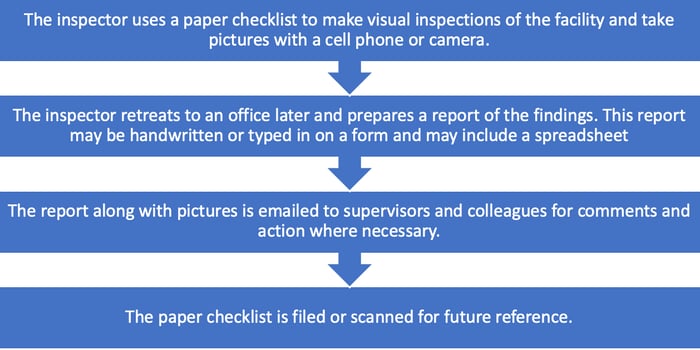
The oil and gas industry continues to have an unacceptably high injury rate and fatalities. According to the Bureau of Labor Statistics (BLS) Census of Fatal Occupational injuries covering the period 2003 to 2010, there were 823 oil and gas fatalities in the United States. Adhering to relevant federal regulations in the industry might save you lots of headaches, accidents and potentially hefty fines.
At the time, this number was seven times higher than all US industries. In 2018 and 2019, there were 130 and 127 fatalities, respectively. These numbers are still high for a sector that should have taken the lessons from disasters in the past and actioned the necessary measures to minimize injuries and fatalities.
Health and safety in oil and gas natural gas exploration and production is possible with the right equipment checklists and work ethic by the crew members, even with the increased use of risky hydraulic fracturing technologies by shale gas producers.
So, what is the problem? In most safety incidents, poor communication and reporting systems were fingered as a significant contributing factor. In many accidents, unsafe conditions were detected before the loss or precursor event but were not well captured, communicated, reported, and investigated to prevent the loss.
Why are rig checks important for safety?
Rig checks are important for safety because they are an effective tool to reduce serious injuries and fatalities in the oil and gas industry. Having the ability to identify any unsafe conditions or practices on rigs and take prompt corrective actions. They also help to control costs associated with production delays and rig repairs, insurance costs and lost production due to shut-downs. Rig checks are essential for the safe operation of oil and gas facilities and associated equipment to minimize the risk of fires, explosions, falls, and other injuries. They ensure that equipment is properly maintained and ready for safe use.
Below are two examples of North American oil and gas production disasters where issue communication was a major factor.
How are rig checks conducted?
Rig checks are conducted by the rig management team once per shift during the pre-operational inspection (POI) and once per shift during the operational inspection (OOI). It is a systematic review to evaluate and document conditions, including equipment, work practices, and procedures. During a rig check, the rig management team members review the status of each rig system and component and check their condition. They examine the gear to ensure it is clean, undamaged, and in serviceable condition. They also check the condition of electrical and mechanical systems and their safety devices.
Below are two examples of North American oil and gas production disasters where issue communication was a major factor.
Oklahoma Rig Explosion
The Oklahoma Rig Explosion is the deadliest oil and gas disaster since Deepwater Horizon. The 2018 explosion near Quinton, Oklahoma, occurred when gas escaped from an oil well, ignited, and killed five workers.
An investigation by the US Chemical Safety Board found several causes of the accident, key among them being a failure to conduct critical safety inspections and an overall lack of adequate safety management. For more than 14 hours before the explosion, dangerous conditions were building up in the well but seem not to have been identified or effectively communicated by oil workers.
NIOSH Rig Check Safety Inspections
To address the need for rig safety inspections Rig Check was developed by the National Institute for Occupational Safety and Health (NIOSH) in partnership with safety experts from the oil and gas extraction industry. It is made up of 35 inspection forms.
Each inspection form includes instructions on how to assess and record the condition of equipment and other relevant items for your operation by rig workers.
Rig workers must document the inspection of said tools and equipment commonly found on rotary and workover rigs frequently to ensure safety.
NIOSH published these as paper-based forms have excellent content, but the no-tech approach has significant limitations for recoding observations and controlling deficiencies that are found, not to mention, difficult to use.
Related: NOISH Rig Checklist Example - Chain Sling
Related: NOISH Rig Checklist Example - Energy Isolation Inspection Checklist
Related: NOISH Rig Checklist Example - Emergency Planning Inspection Checklist
Related: NOISH Rig Checklist Example - Power Tools Inspection Checklist
How to Improve Rig Safety Inspections and Issue Communication
Many oil and gas producers still use antiquated manual methods to perform inspections and communicate issues. Below is the typical day of an inspector:

There are obvious disadvantages to this process:
- First, it is slow. Critical information about a defect moves slowly, whereas best practice is to share it instantly.
- Second, it is prone to human error. An oversight such as forgetting to include an issue in a report can have disastrous consequences.
- Third, it does a poor job of credible documentation. Checking YES/No provides little evidence of a properly conducted inspections.
- Fourth, this process is not ideal for communication and collaboration. Inspectors cannot share and discuss an issue in real-time with other colleagues and supervisors.
To improve issue communication, oil and gas companies must turn to digital inspection and communication methods. Digital communication technologies help companies develop more efficient communication, remote monitoring, and real-time asset management on oil rigs and oil fields.
Transitioning to the digital era offers the potential to provide superior protection to staff, improve operational efficiency, and accelerate productivity.
Oil and gas operators must seek communication solutions that improve safety and operations, reduce operational costs, and better manage risk.
FTQ360 NIOSH Rig Inspection Checklists
Enter the FTQ360’s NIOSH Rig Inspection checklists to the modern world of cloud-based mobile technologies. While maintaining backward compatibility to the NIOSH recommendations, FTQ360 has extended the capabilities to integrate photo documentation, dynamically expanding to verify each check made, and to document deficiencies that require correction.
The 35 checklists that are to be used by rig workers to document issues are based on the NIOSH checklists for these 9 main topics:
- Emergency Response: 6 checklist templates ensure that the emergency response has been prepared and is in place.
- Electrical Safety: 2 checklists to ensure that proper controls are in place for hazardous energy and electrical systems.
- Stairways and Walkways: ensure that stairways, rails, and walkways around the rig are of the proper size and configuration.
- Lines and Slings: ensure that chains, ropes, hanging lines, hoisting lines and slings are operating properly.
- Tools: ensure that tools are maintained and stored properly.
- Hoses: ensure that hoses used around the rig are in good working order and used properly.
- Chemical Hazards: ensure that chemicals and compressed gasses are stored properly and do not present a hazard to employees or the environment. Also ensure that MSDS are up to date and appropriate communication has taken place.
- Ladders and Platforms: ensure that ladders and platforms around the rig are of the proper size and configuration required to provide safe access for employees.
- Other: Miscellaneous safety checks on drill string components, load path welds and overhead equipment to ensure that hazardous conditions are addressed.
The FTQ360 Oil and Gas Software Platform is a quality management tool for oil and gas that helps companies conduct inspections while streamlining communications and sticking to industry recommended practices.
Streamlining issue communications is the first step to excellence. Here’s an at a glance overview of FTQ360’s standout features:
- Stay on top of your deficiencies by eliminating unnecessary steps and automating critical tasks. Defects are documented right on the inspection checklist screen.
- Notifications are automatically sent to the parties responsible for making corrections.
- Corrections documented online by responsible parties.
- Inspectors are automatically notified of corrections.
- There is online visibility of open issues and automatic weekly punch lists for every team.
- Automated workflows remove delays in communicating issues from days to minutes.
- The FTQ360 platform eliminates the need to send email communications and reminders.
If you would like more information on how FTQ360 can help you streamline rig inspections and issue communications, check out a free demo.

